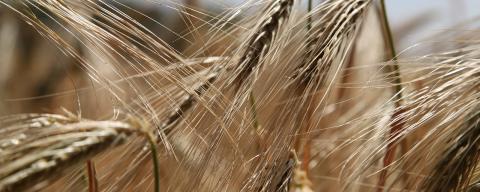Celiacs vs Gluten Intolerant and Gluten-Free Friendly Foods
What is Gluten?
Gluten is a protein that is found in some grains such as wheat, rye and barley, and foods made with those grains such as bread, cookies, pasta, beer and cereal.1 But it isn't found in other grains such as corn, rice, millet, buckwheat or quinoa. People may follow a gluten free diet for a variety of reasons, but those who need to follow one often fall into one of two categories: those who have celiac disease or those who are gluten intolerant. These are two biological responses to the protein gluten, but they are very different!
Celiac Disease
Celiac disease is a genetic, autoimmune disease that occurs in 1% of the U.S. population, making it the most common autoimmune disease.2 The body's response is often severe in terms of painful symptoms ranging from stomach pain to head and joint aches, as well as malabsorption.3 Eating gluten causes inflammation and damage to the intestines, sometimes past repair. Any age can be diagnosed with celiac disease, and this is done through a blood or tissue sample.4
The smallest amount of gluten can produce a response so the solution for celiac disease is to eliminate all gluten from diet permanently, even hidden sources.5 People with celiac disease often work with registered dietitians to ensure they are eating a complete diet and all nutrients. Gluten free foods don't have as much fortification, the process of adding nutrients into food items that aren't normally present, as gluten containing grains, so micronutrient deficiencies are more common.
Gluten Intolerance
People who are gluten intolerant are sensitive to foods that contain gluten. The severity ranges between people as well as the symptoms. Common symptoms include nausea, bloating or fatigue.1 These problems with gluten aren't genetic and are not an allergy.5 Someone can be born with it, or it can develop over time. Diagnosis is more difficult with gluten intolerance, but it's important to rule out celiac disease and wheat allergies first.3 One can also try following a gluten free diet to see if symptoms resolve.1 Some people who are gluten intolerant can handle small amounts of gluten while others must exclude it indefinitely.
Gluten in Foods: How to spot it and what to be aware of
If you are avoiding gluten in foods, it can be tricky and confusing when going to the grocery store or restaurants. Gluten ingredients can be found in a variety of foods such as breads, pastas, desserts, pizza and anything with dough! It can also be found hidden in foods such as soups, sauces and salad dressings, and even some medications and cosmetics. In addition, breaded or fried foods often contain gluten, as well as possible exposure to gluten during the preparation like gluten-free food fried in the same oil as gluten containing food.6
Learning to read the Nutrition Facts labels on food products can help someone determine which foods are safe. The ingredient list is required to be labeled if it contains "wheat" which then means it contains gluten as well.7 Looking for labels on foods that say "gluten free" or "no gluten" are also helpful, as these are monitored by the FDA.8
Gluten Free Friendly Foods
Luckily, all fruits and vegetables are naturally gluten free on their own! In addition, beans, nuts and seeds, eggs, poultry, fish and meat are all gluten free9 before they are prepared. It is often in the cooking process that ingredients containing gluten, such as flour are added to these foods that make them no longer gluten free. A gluten free diet doesn't have to be restrictive, but it takes practice to create meals that eliminate gluten containing ingredients. There are so many alternatives, and almost all gluten containing foods have a gluten-free version. You can find breads, pastas, cookies, snacks, pancakes and much more that are gluten free!
References
1. Cleveland Clinic. (2021, June 30). Gluten Intolerance. Cleveland Clinic. https://my.clevelandclinic.org/health/diseases/21622-gluten-intolerance
2. Igbinedion, S. O., Ansari, J., Vasikaran, A., Gavins, F. N., Jordan, P., Boktor, M., & Alexander, J. S. (2017). Non-celiac gluten sensitivity: All wheat attack is not celiac. World journal of gastroenterology, 23(40), 7201–7210. https://doi.org/10.3748/wjg.v23.i40.7201
3. Gluten Intolerance Group. (2021, July). Celiac Disease, Non-Celiac Gluten Sensitivity or Wheat Allergy: What is the Difference? Gluten intolerance Group. https://gluten.org/2019/10/15/celiac-disease-non-celiac-gluten-sensitivity-or-wheat-allergy-what-is-the-difference/
4. National Institue of Diabetes and Digestive and Kidney Diseases. (2020, October). Diagnosis of Celiac Disease. National Institue of Health. https://www.niddk.nih.gov/health-information/digestive-diseases/celiac-disease/diagnosis
5. Northwestern Medicine. (2019, August). Celiac Disease vs. Gluten Intolerance. Northwestern Medicine. https://www.nm.org/healthbeat/healthy-tips/celiac-disease-vs-gluten-intolerance-infographic
6. Biesiekierski JR. What is gluten?. J Gastroenterol Hepatol. 2017;32 Suppl 1:78-81. doi:10.1111/jgh.13703
7. Celiac Disease Foundation. Sources of Gluten. Celiac Disease Foundation. https://celiac.org/gluten-free-living/what-is-gluten/sources-of-gluten/
8. U.S Food and Drug Administration. (2018, July 16). Gluten and Food Labeling. FDA. https://www.fda.gov/food/nutrition-education-resources-materials/gluten-and-food labeling
9. Celiac Disease Foundation. Gluten-Free Foods. Celiac Disease Foundation. https://celiac.org/gluten-free-living/gluten-free-foods/
Check Out Our New Health & Well-Being Page
Our specialists help create healthy people and healthy places in New Hampshire.
Featured LINK
Mental Health Resources for New Hampshire - a printable county-specific guide to help New Hampshire residents find local, state, and national mental health resources.

